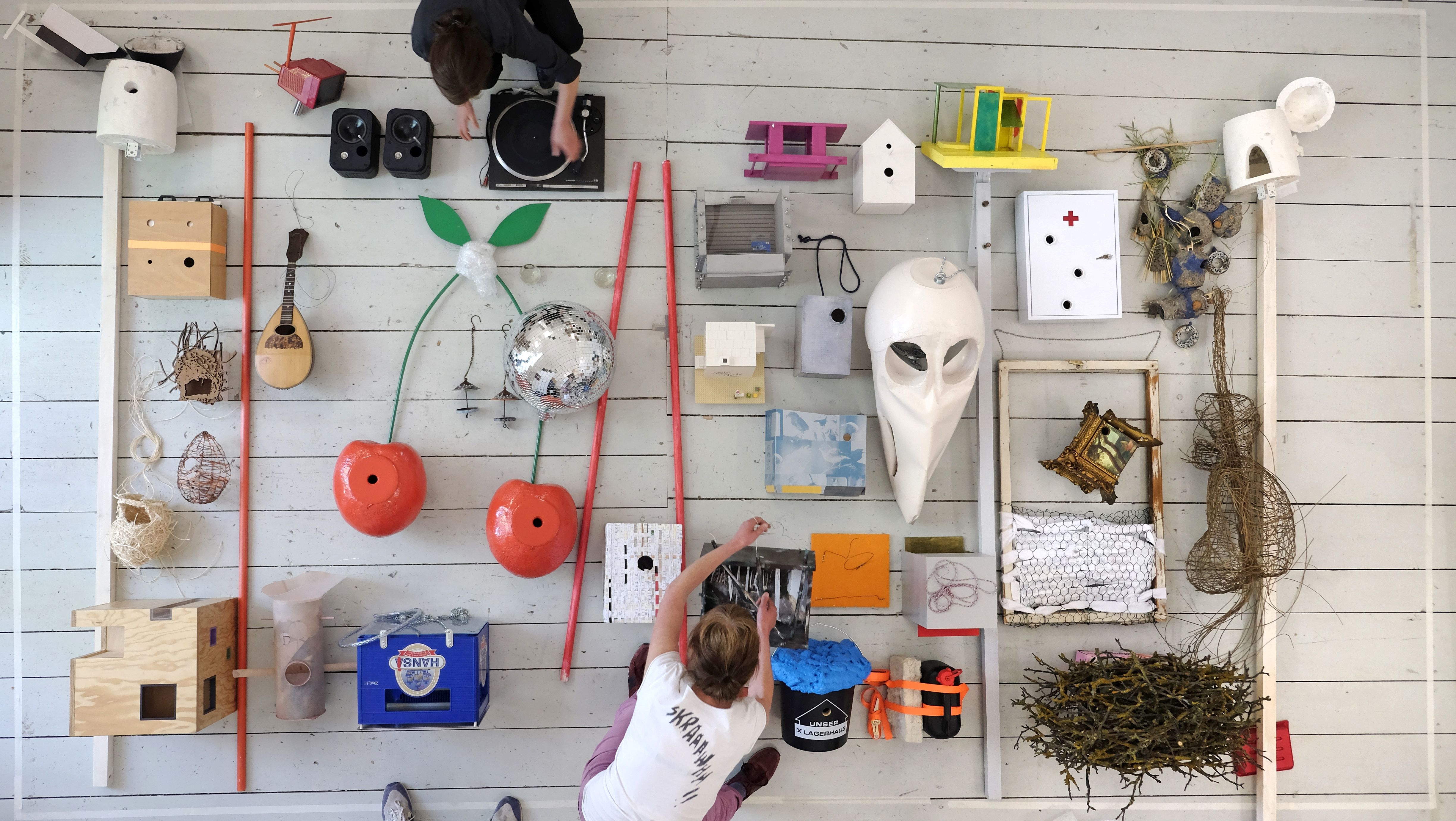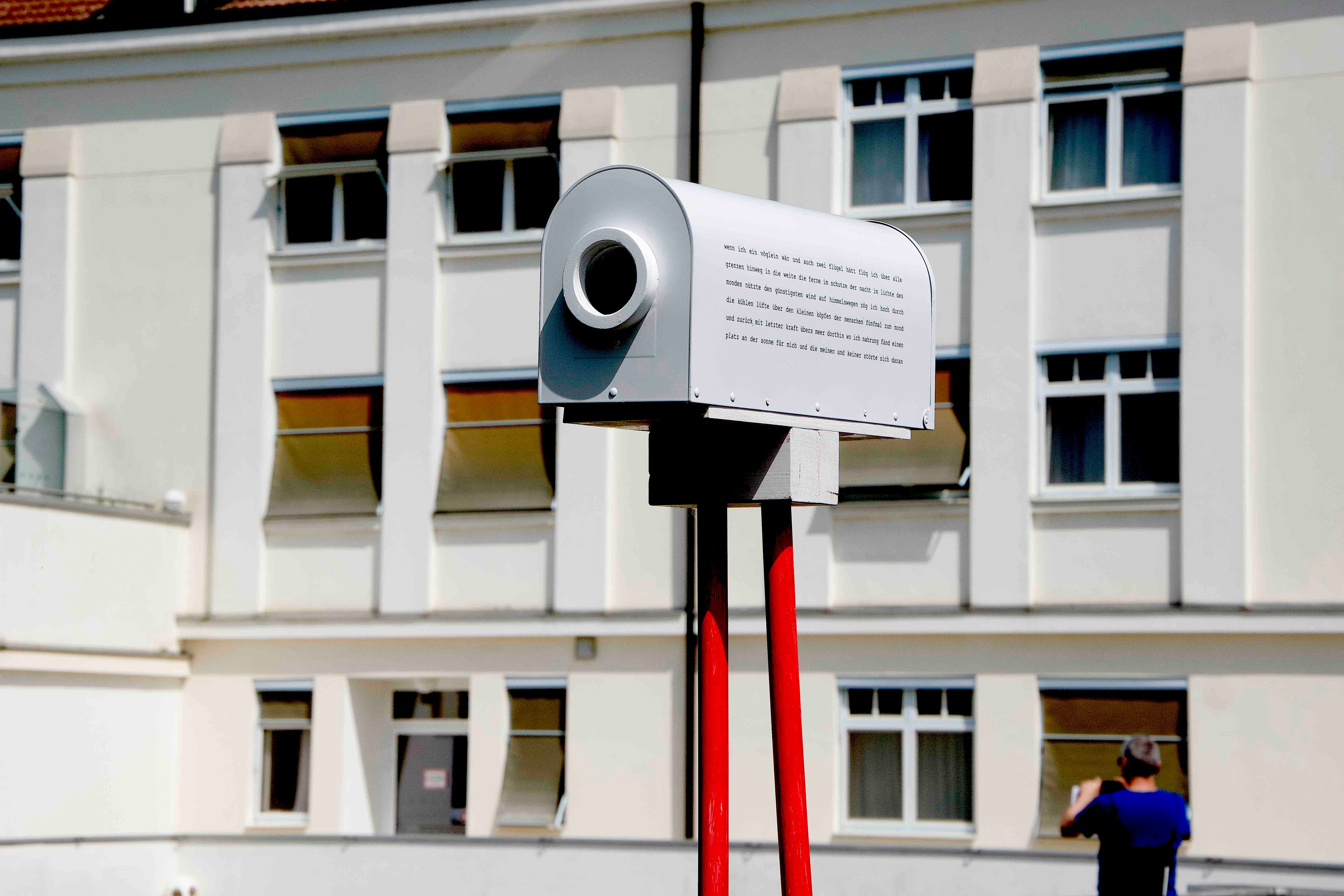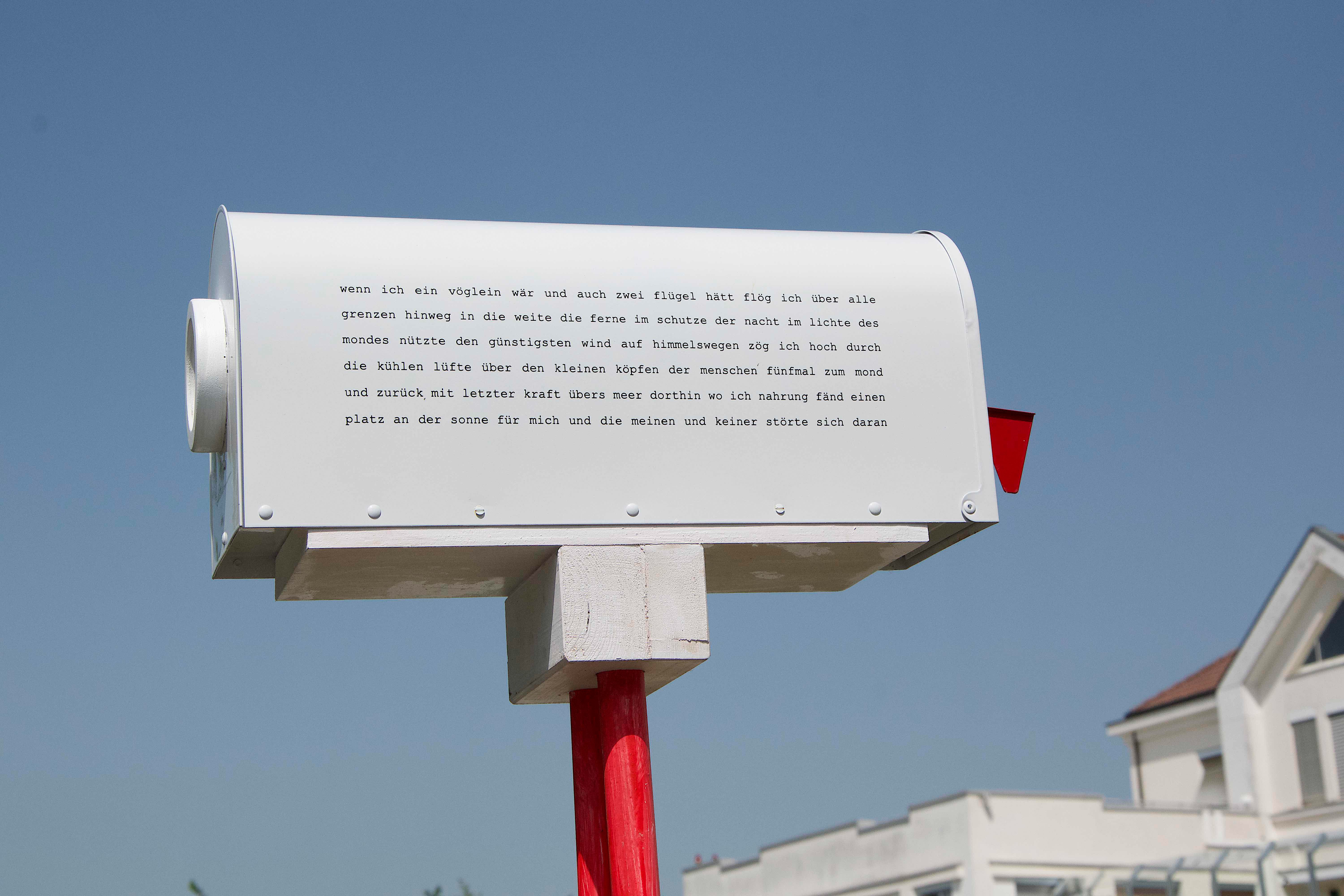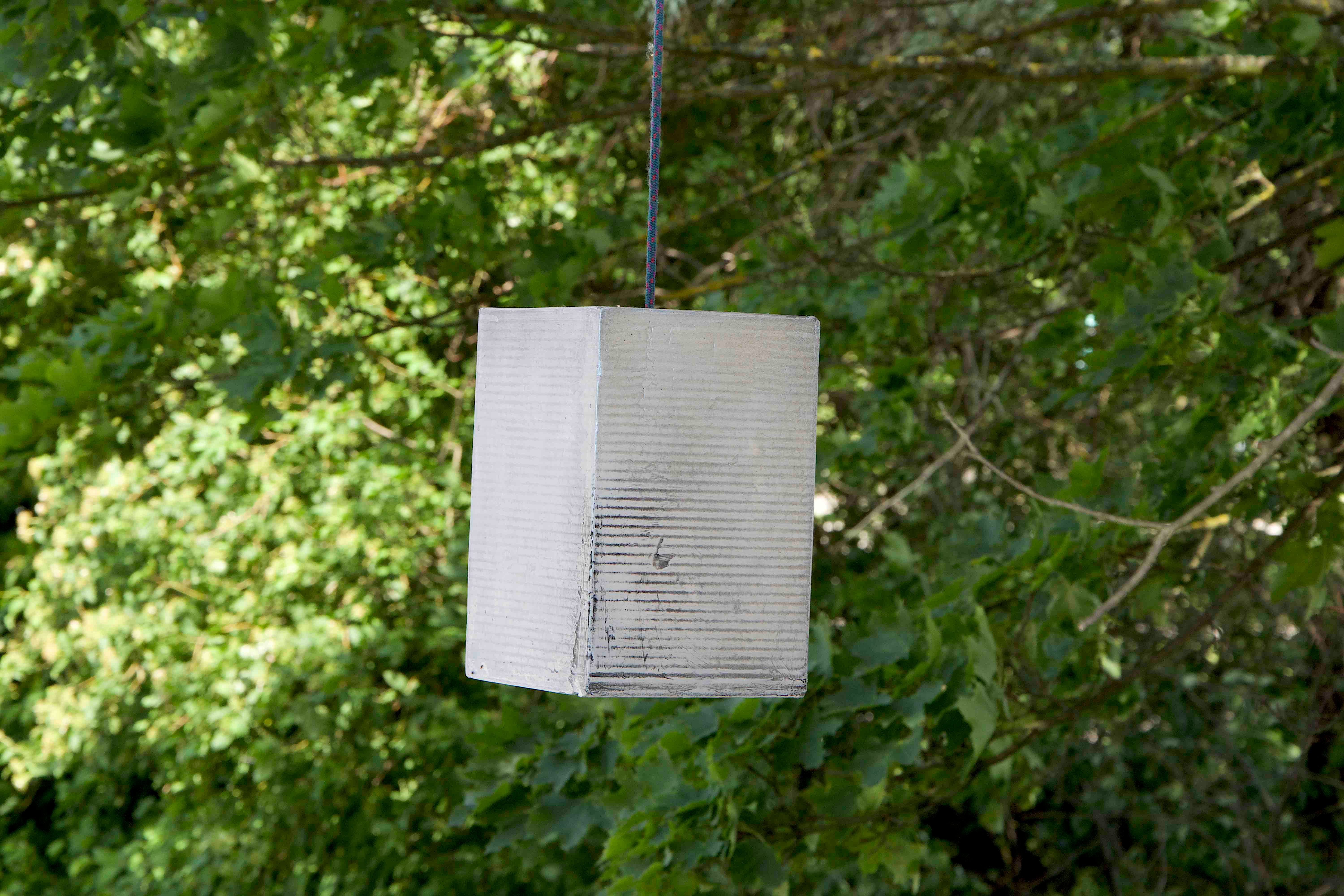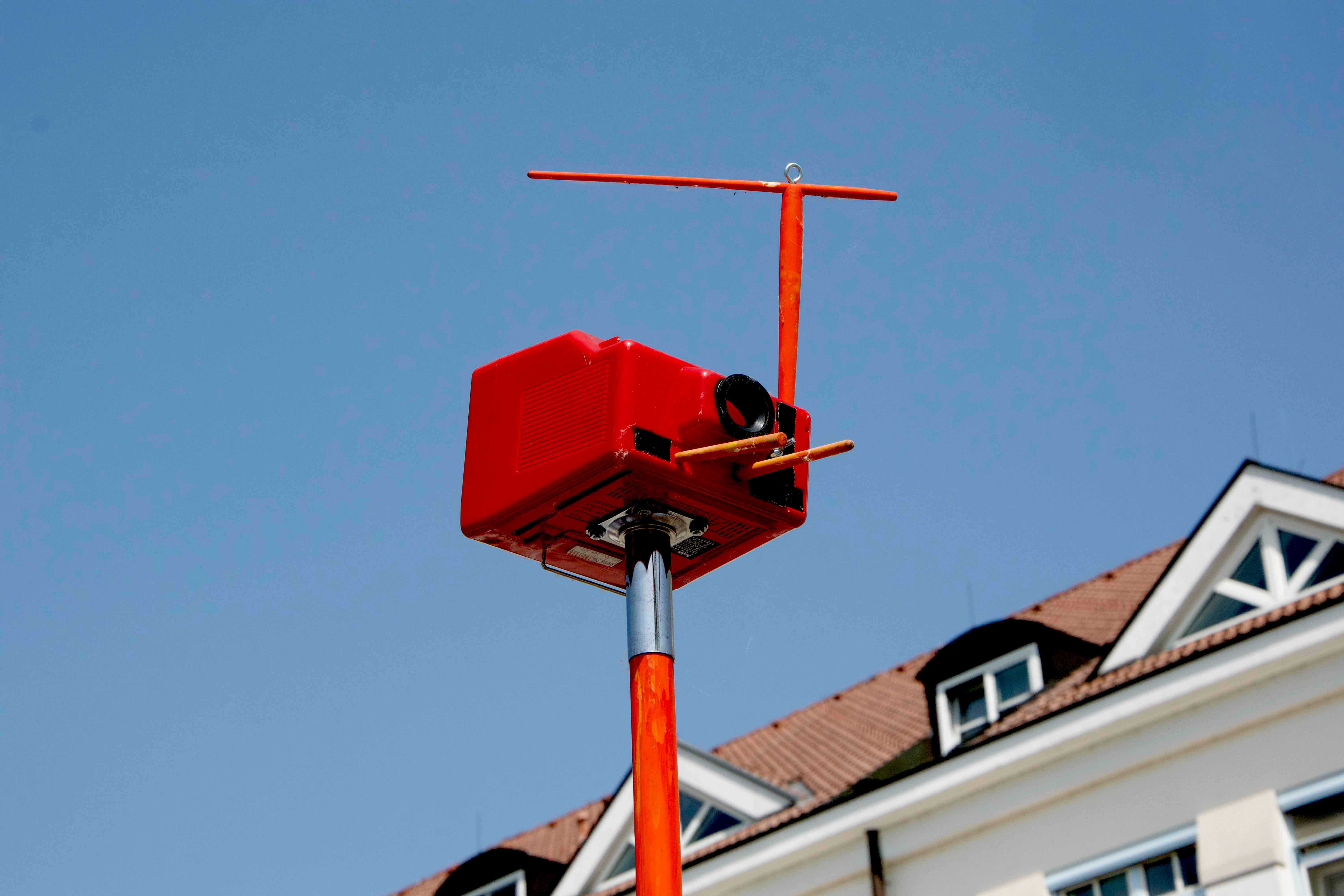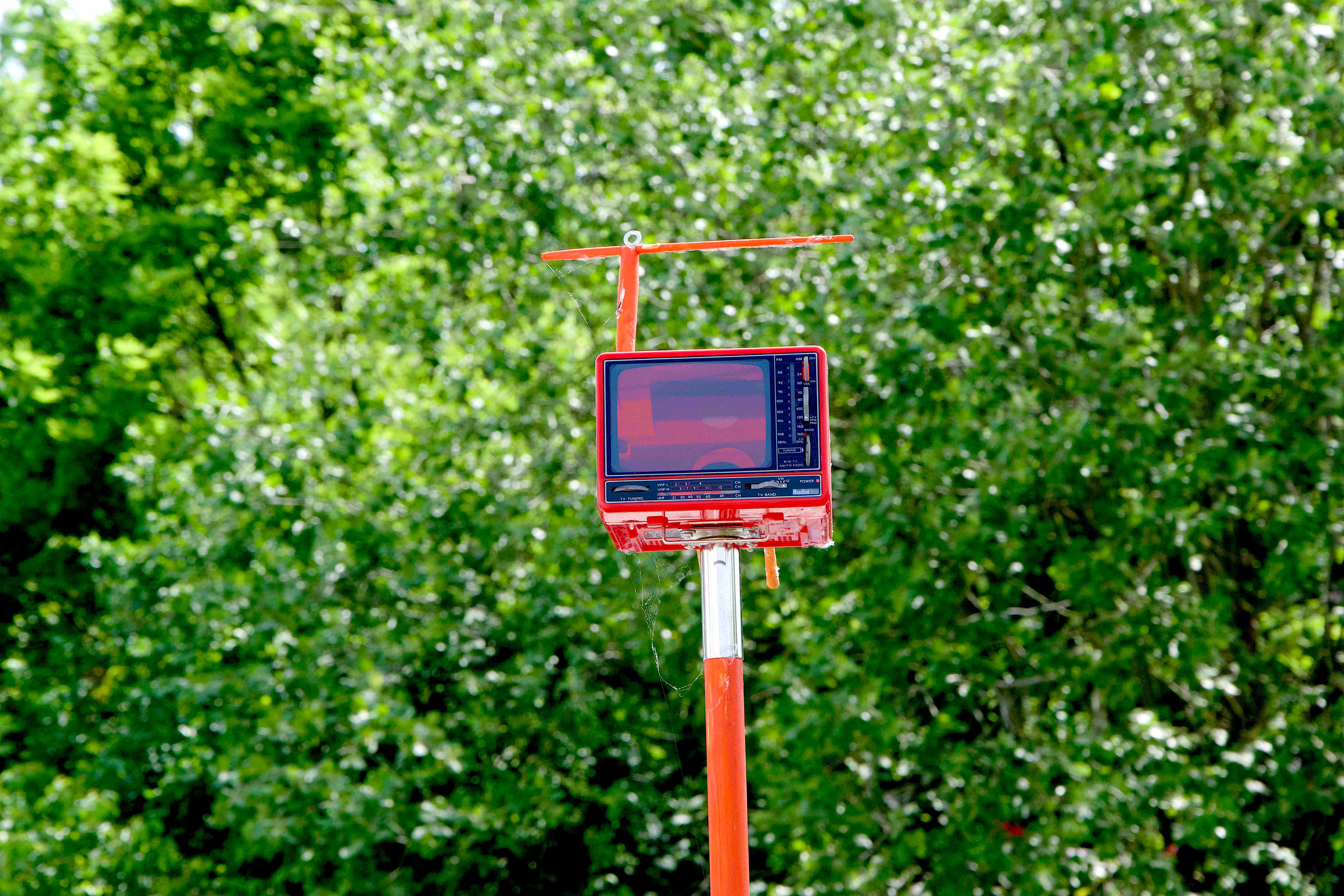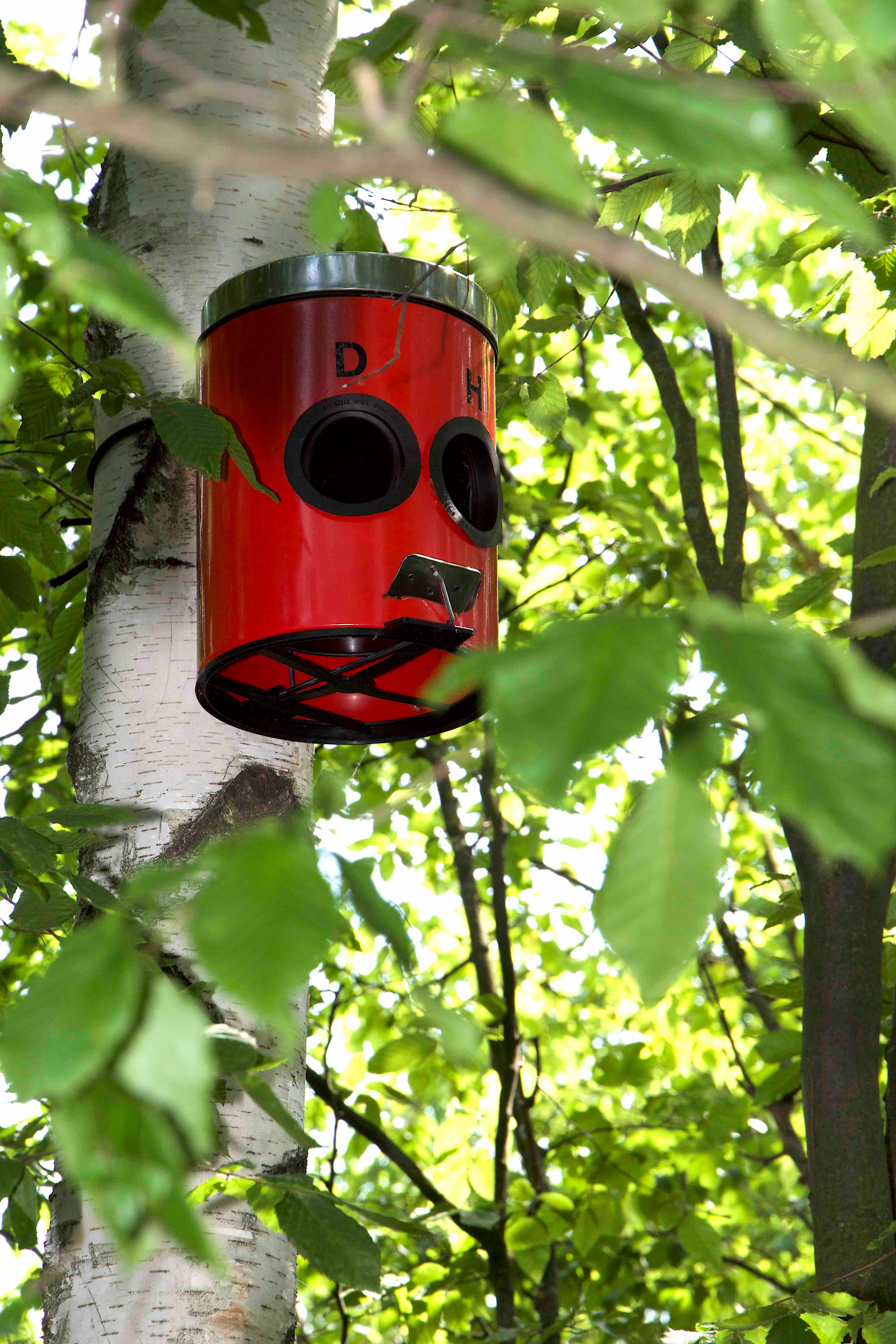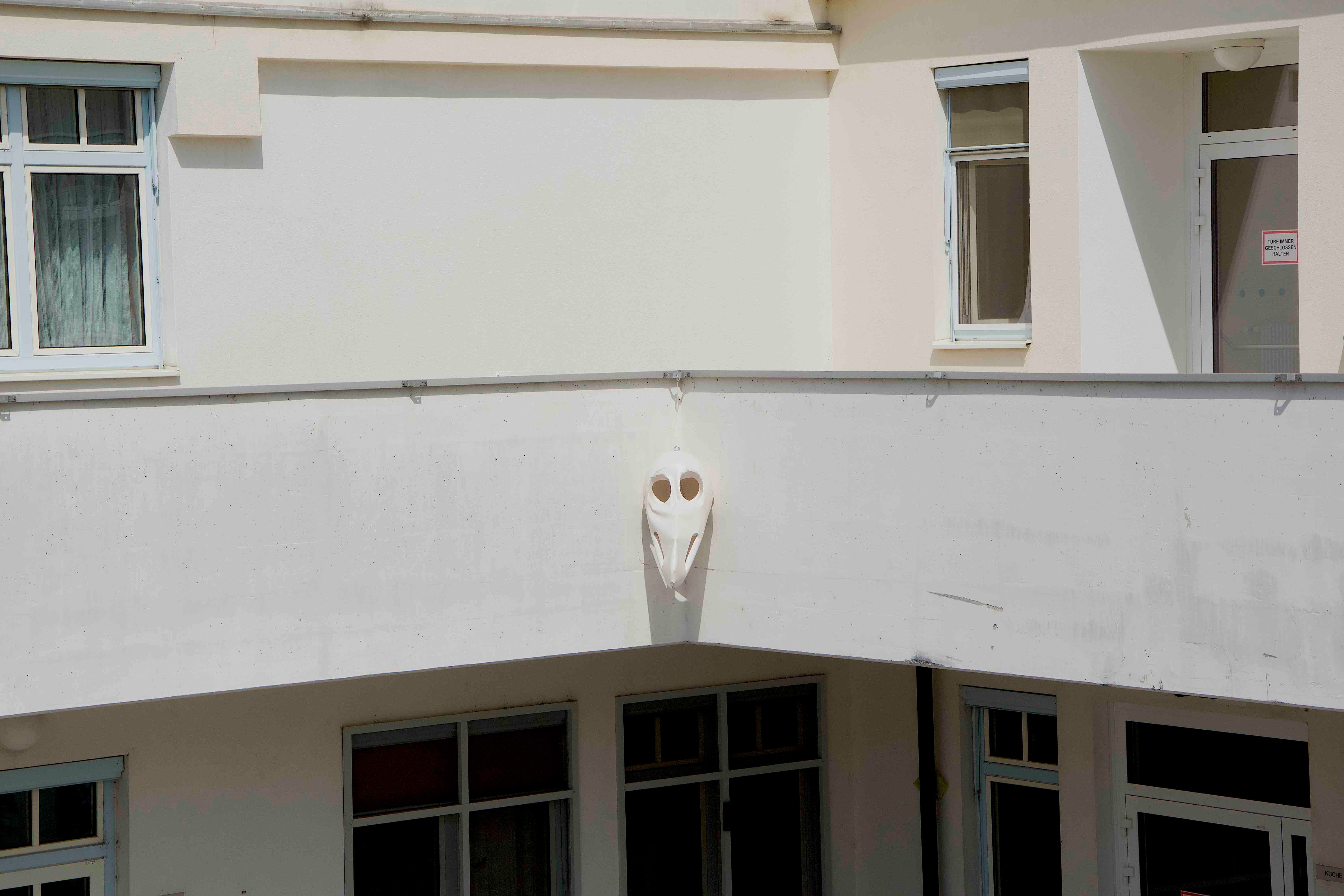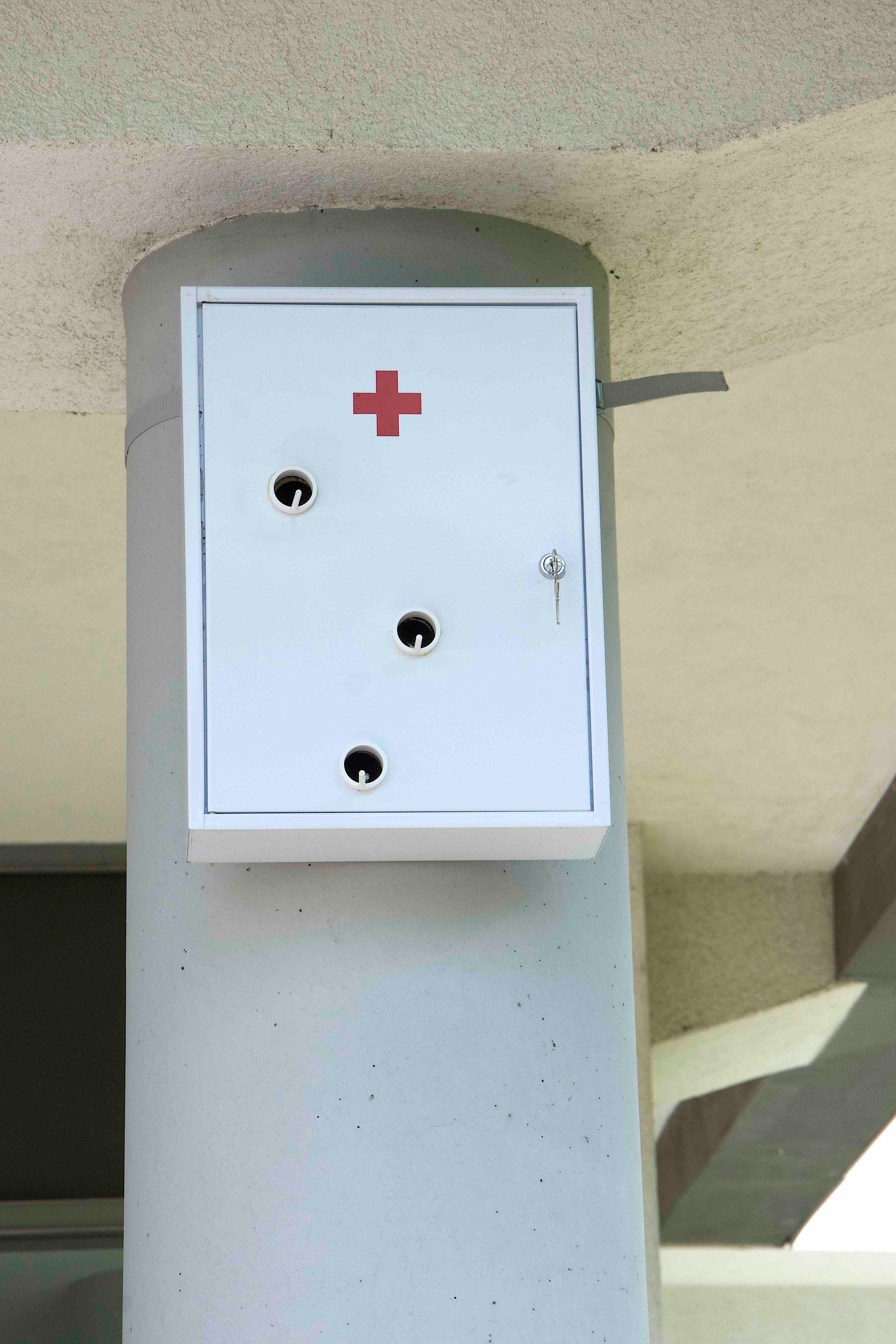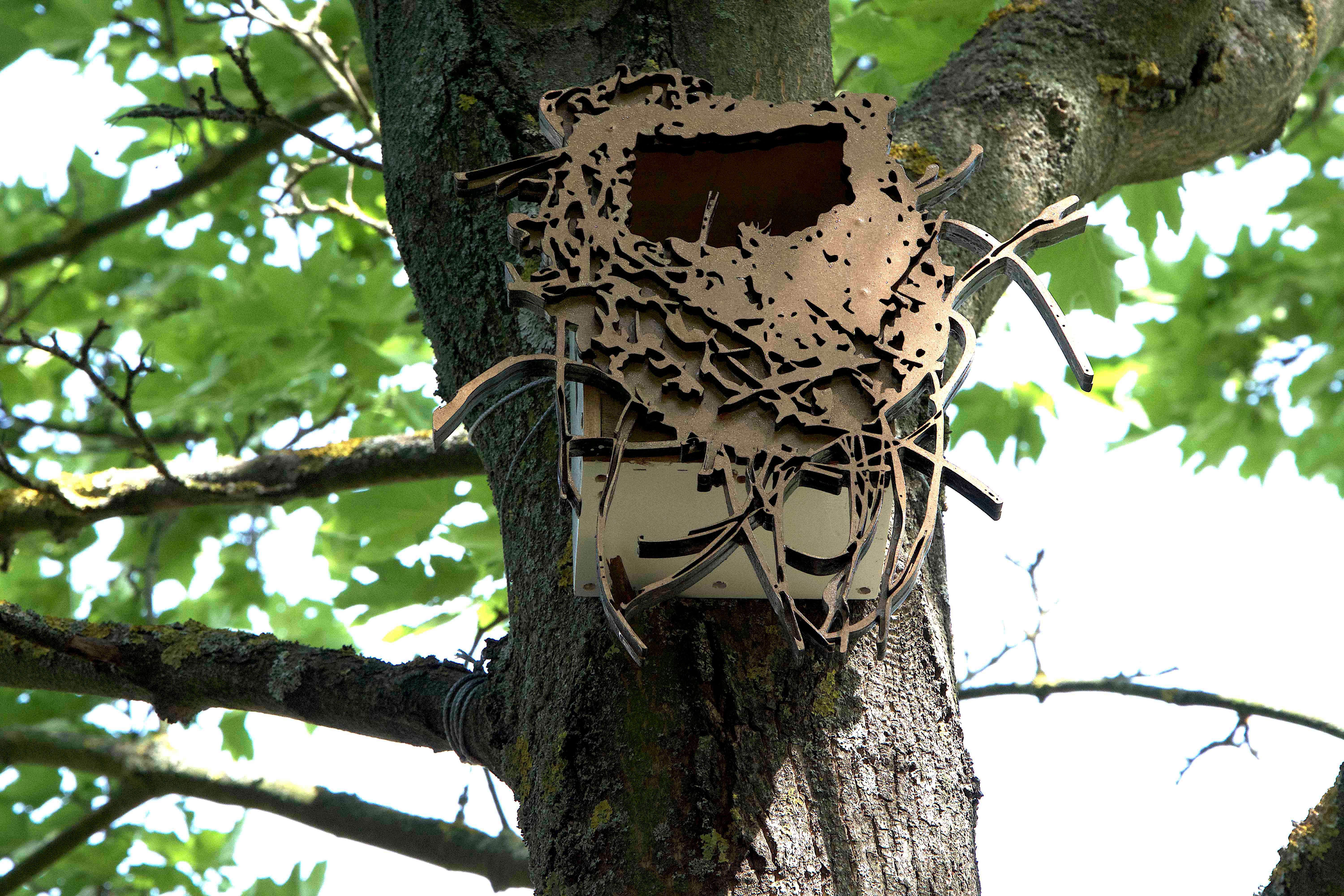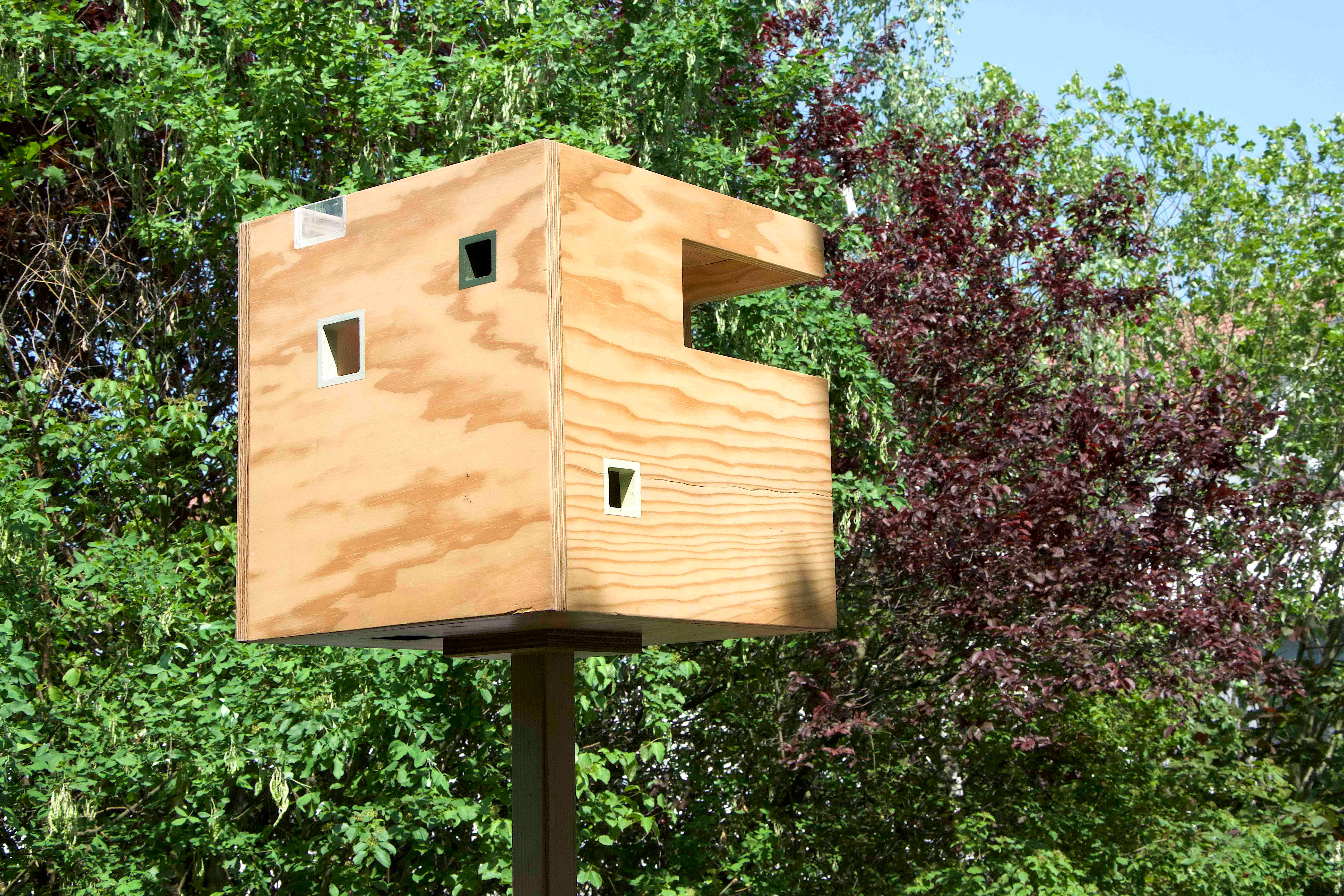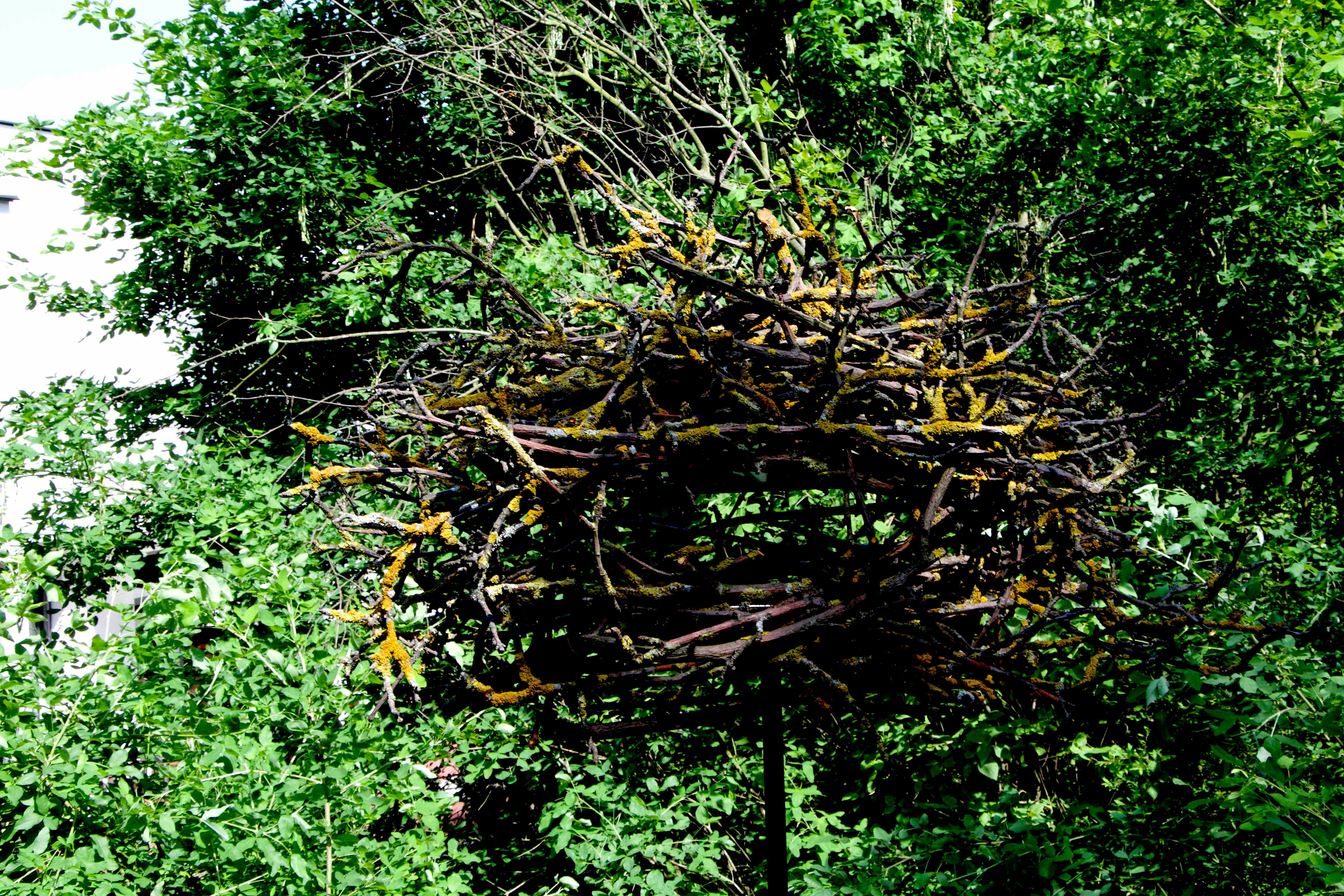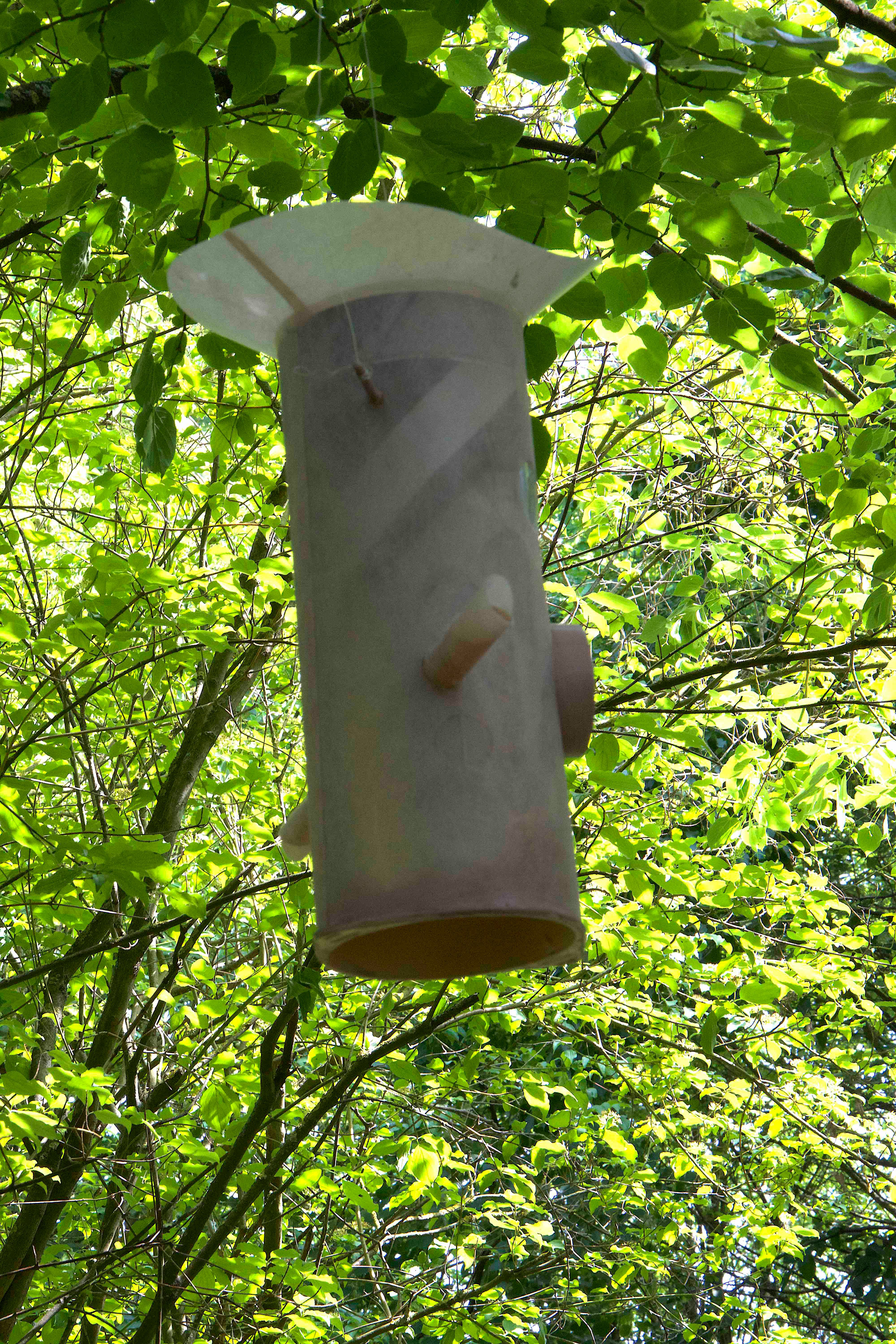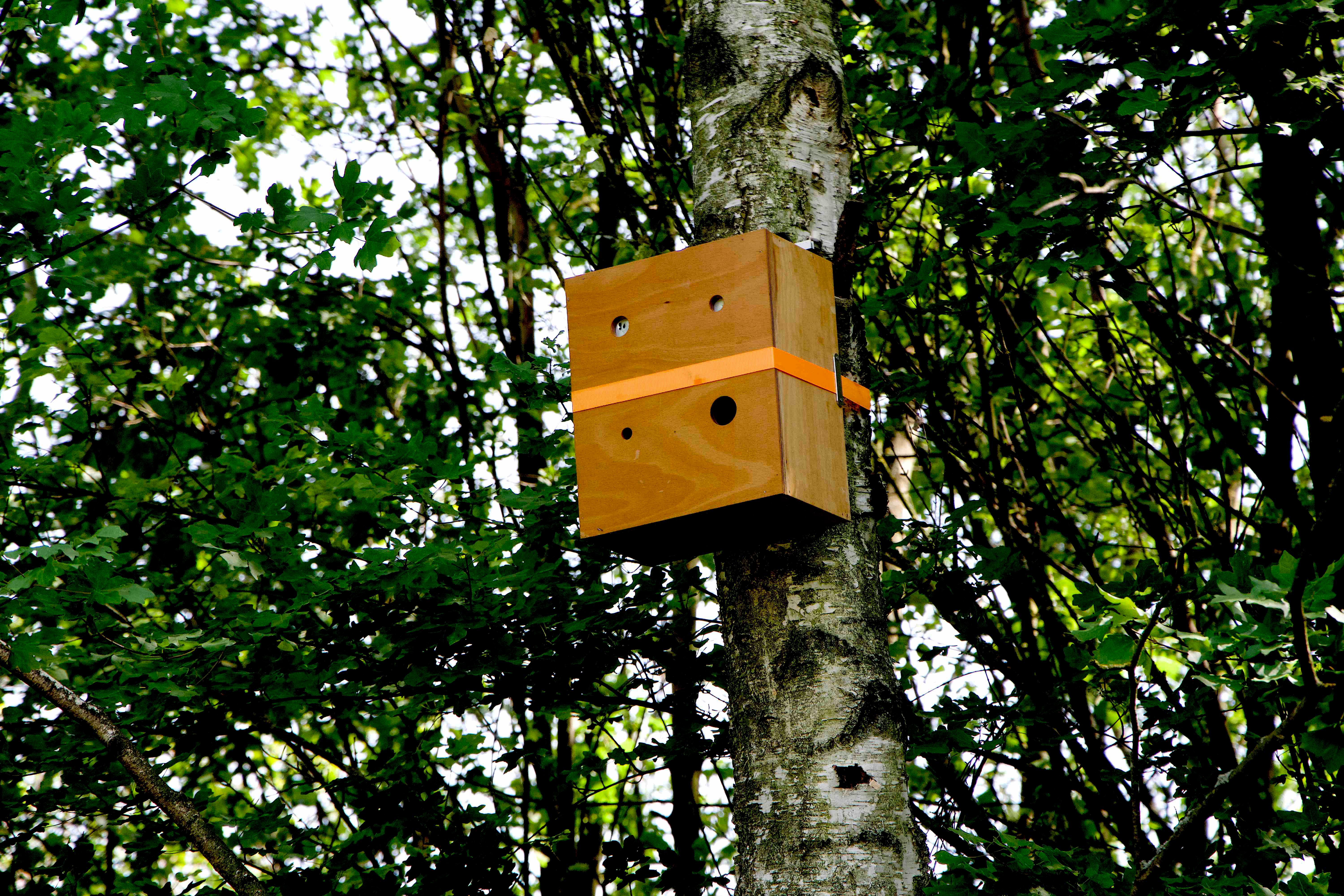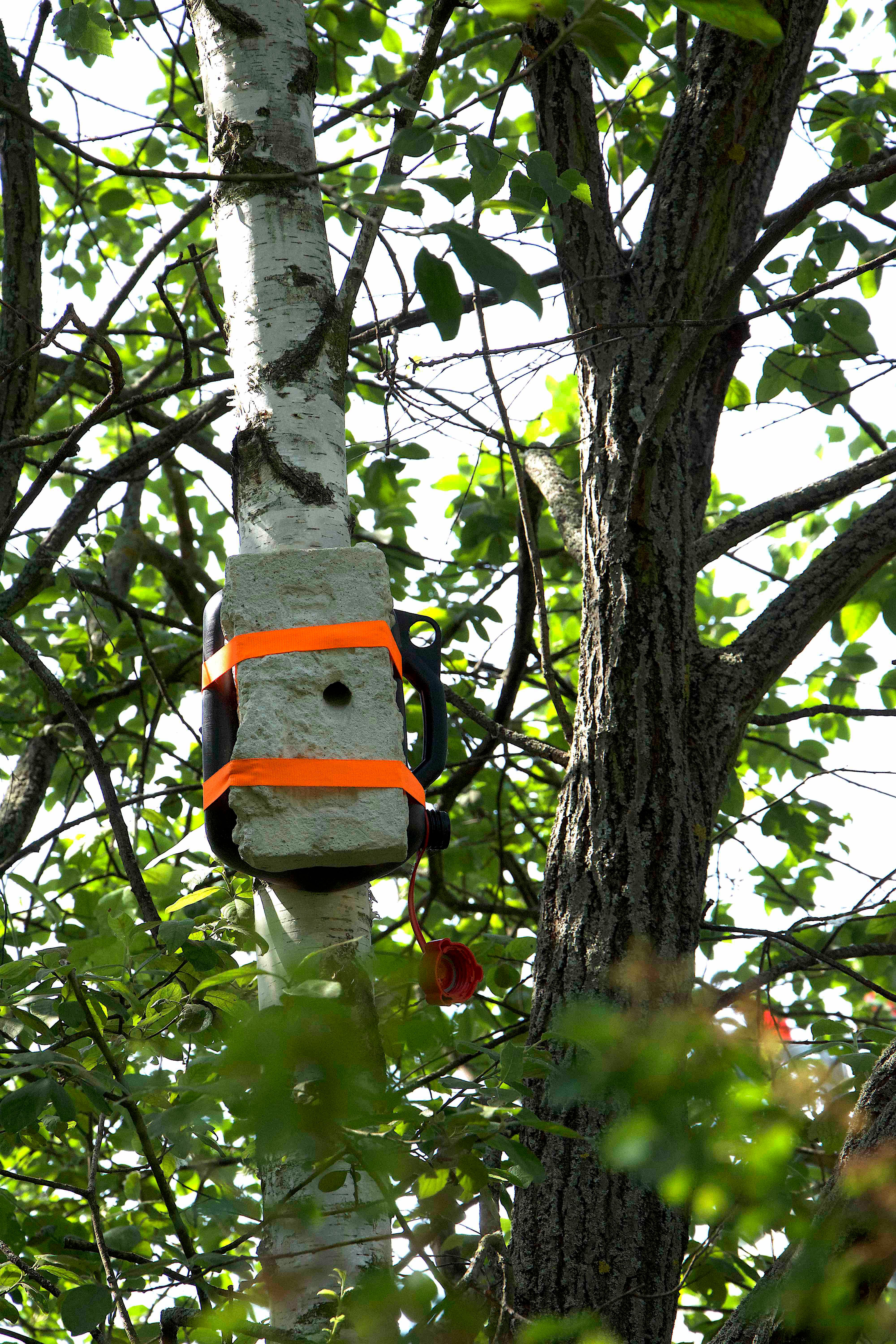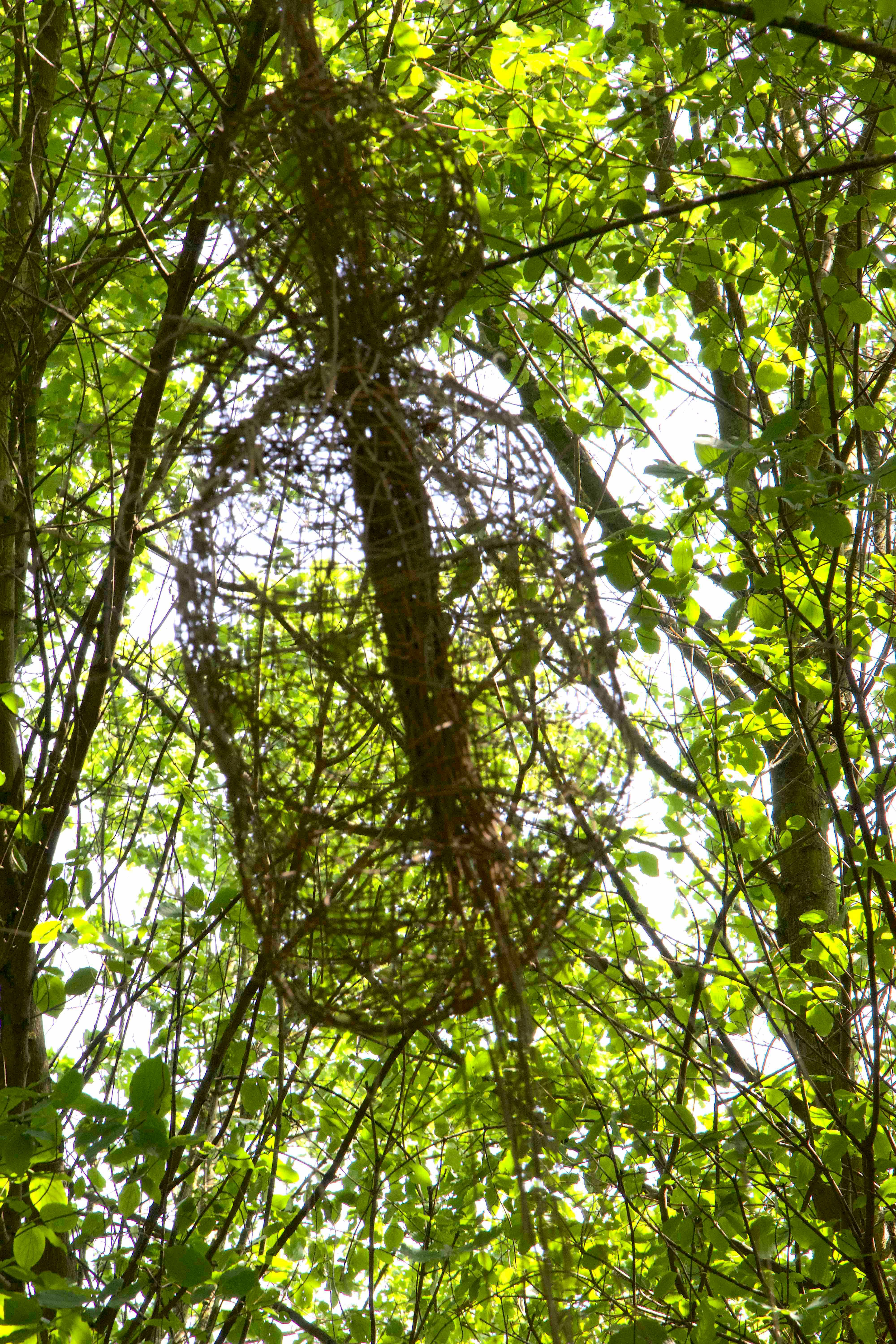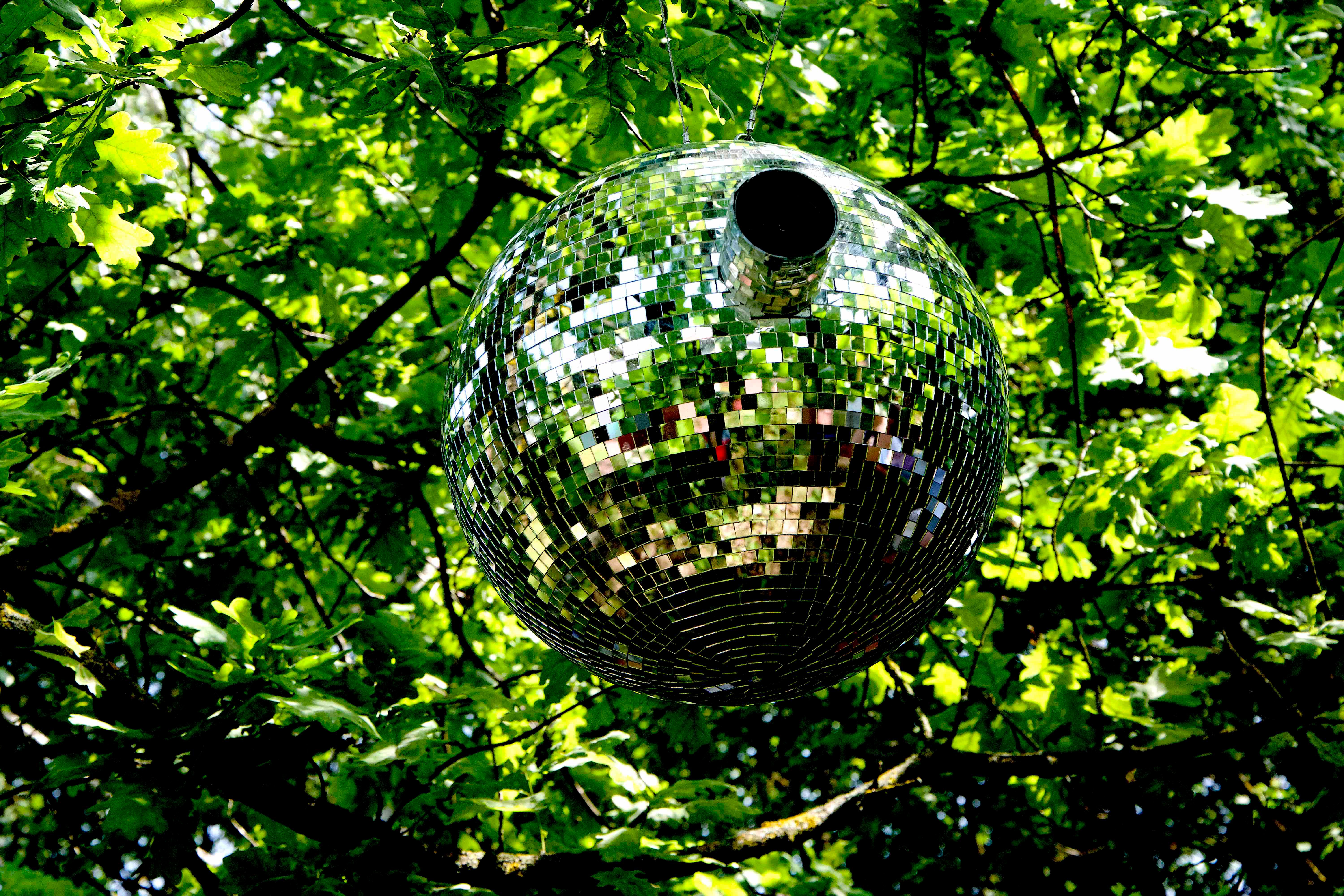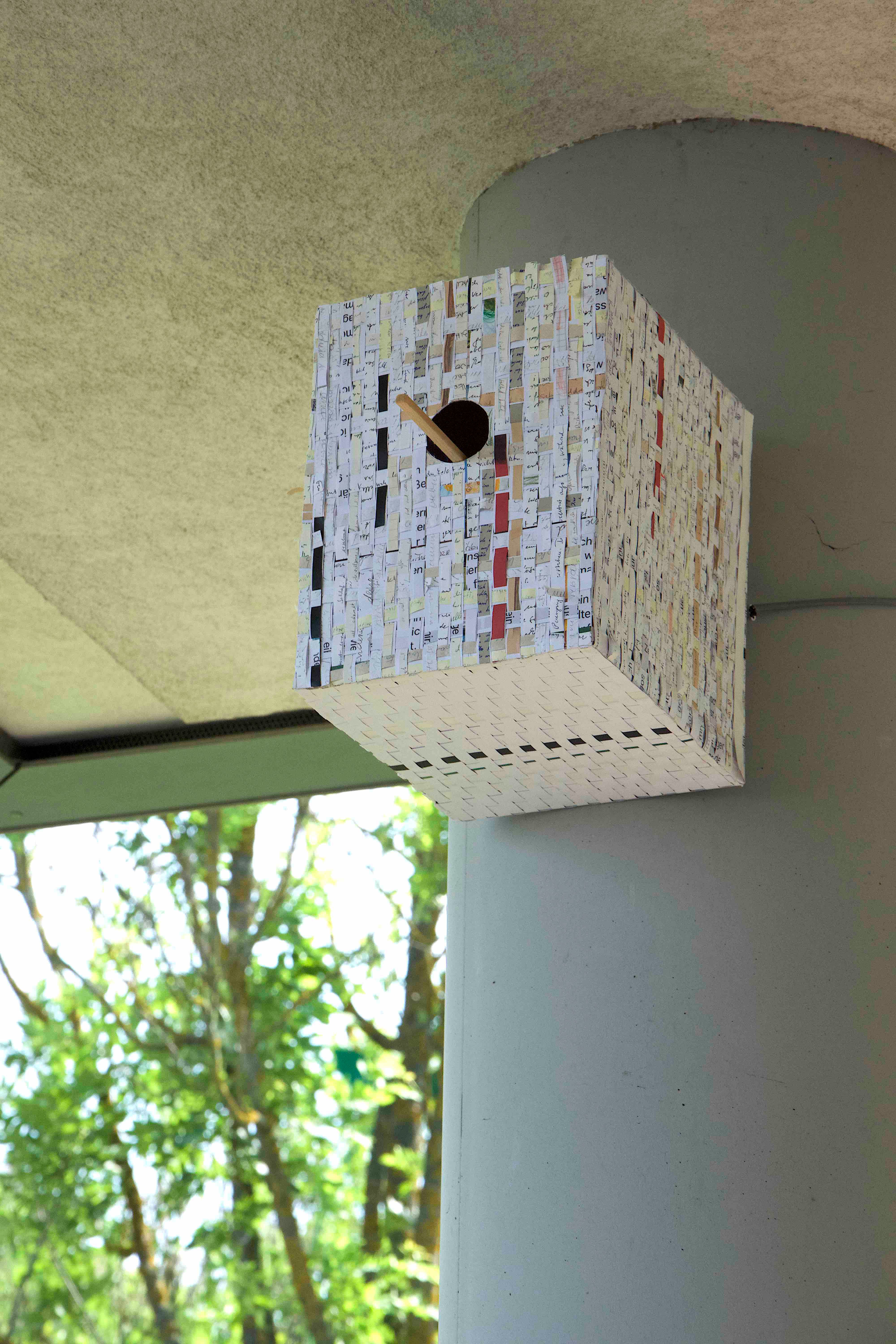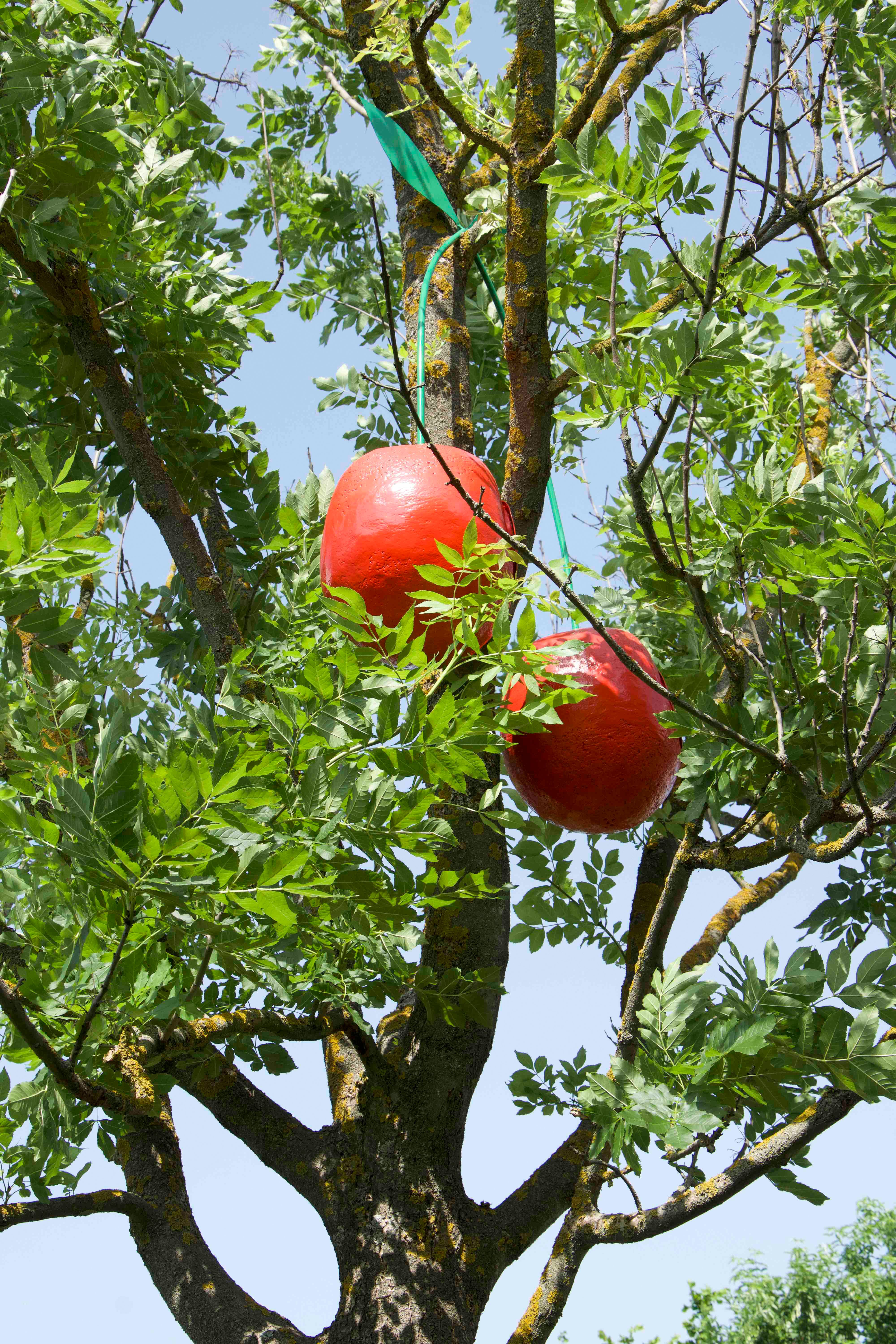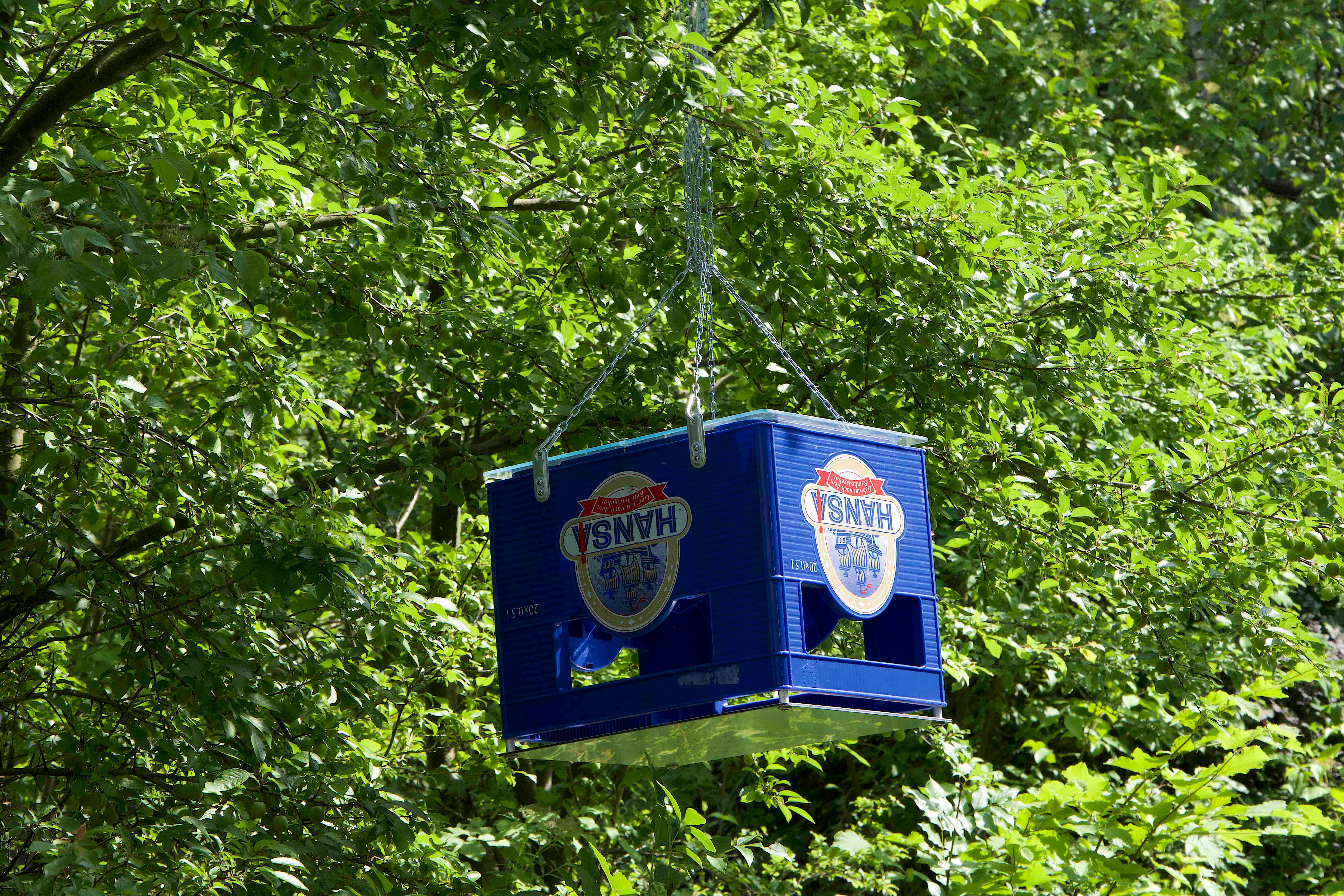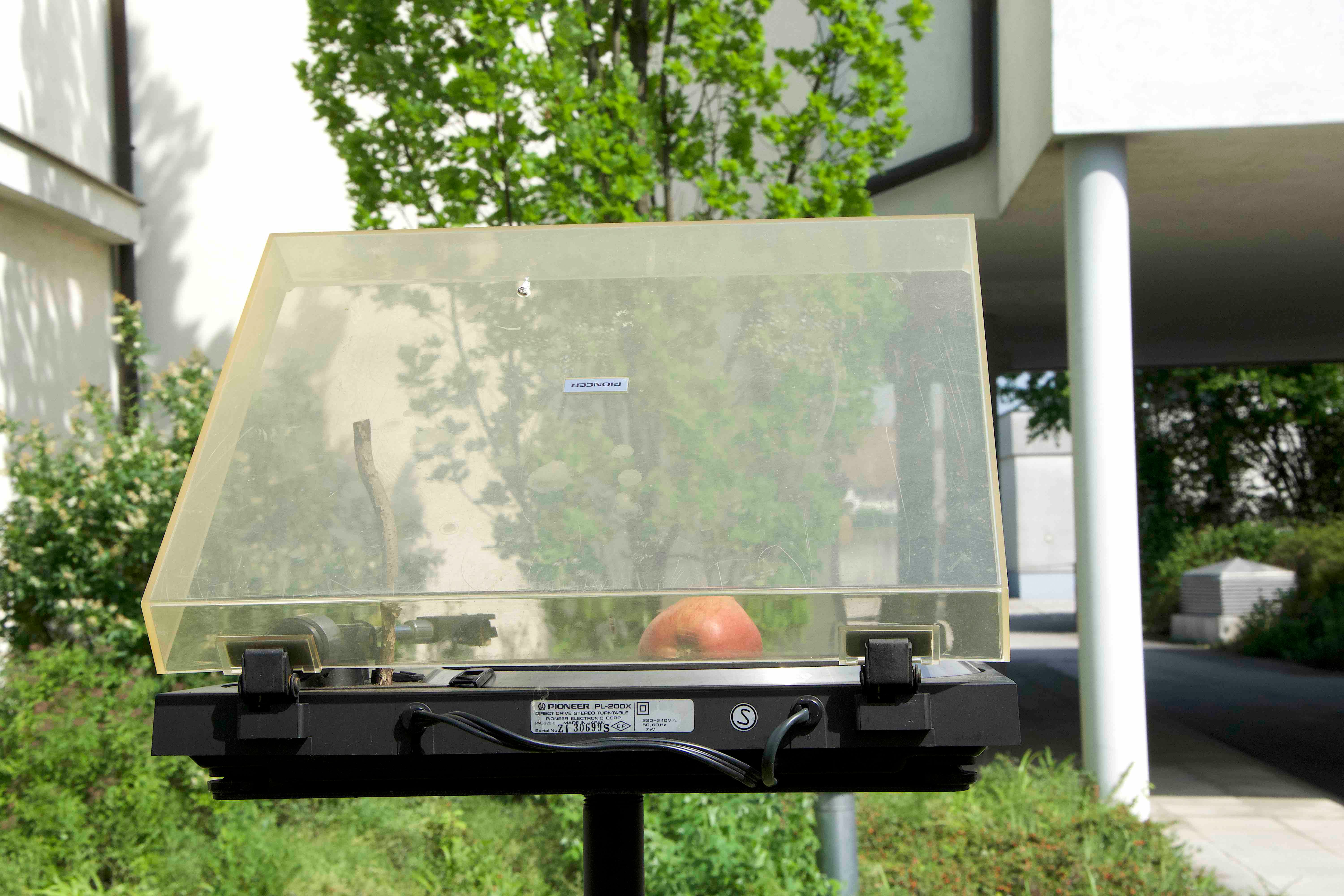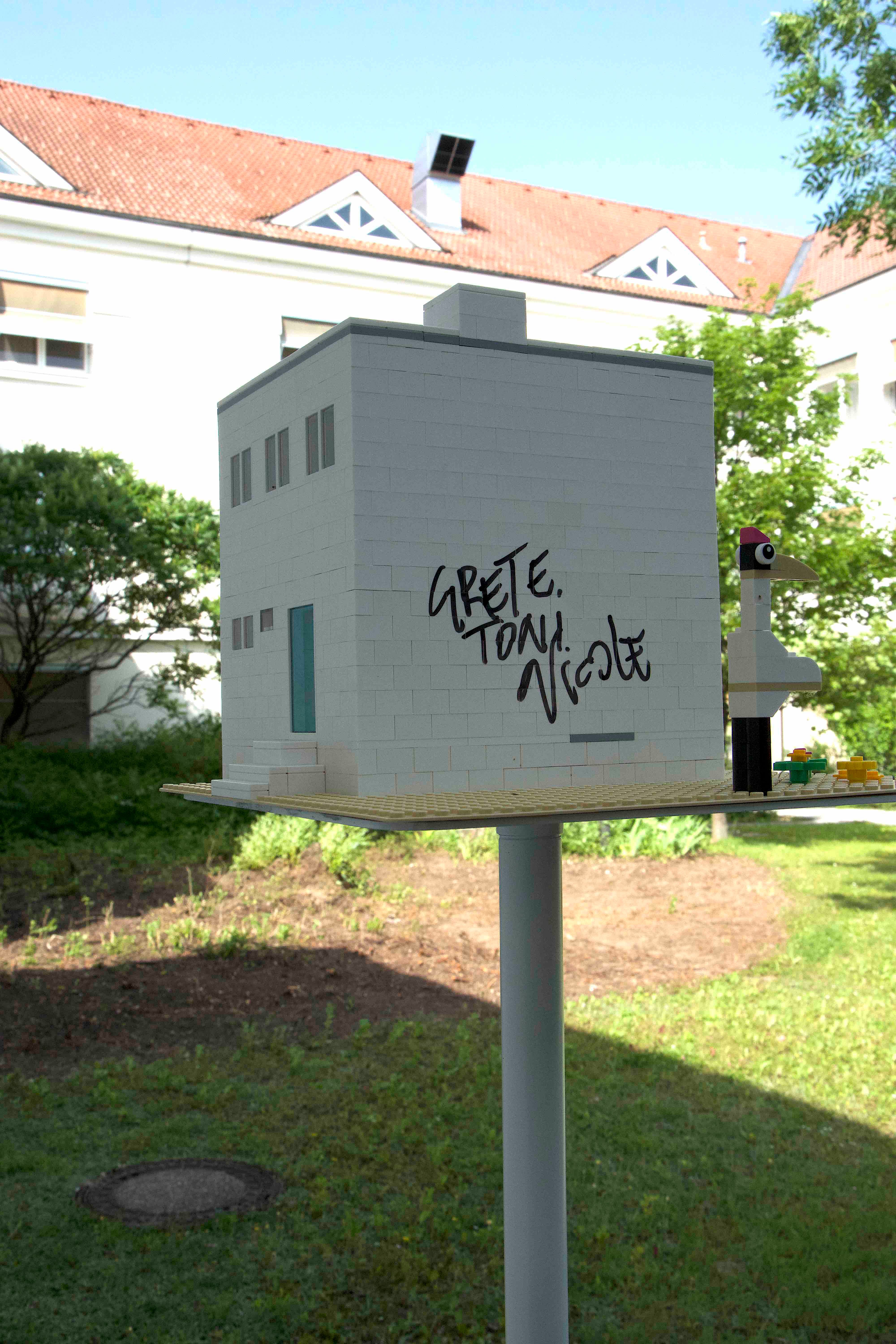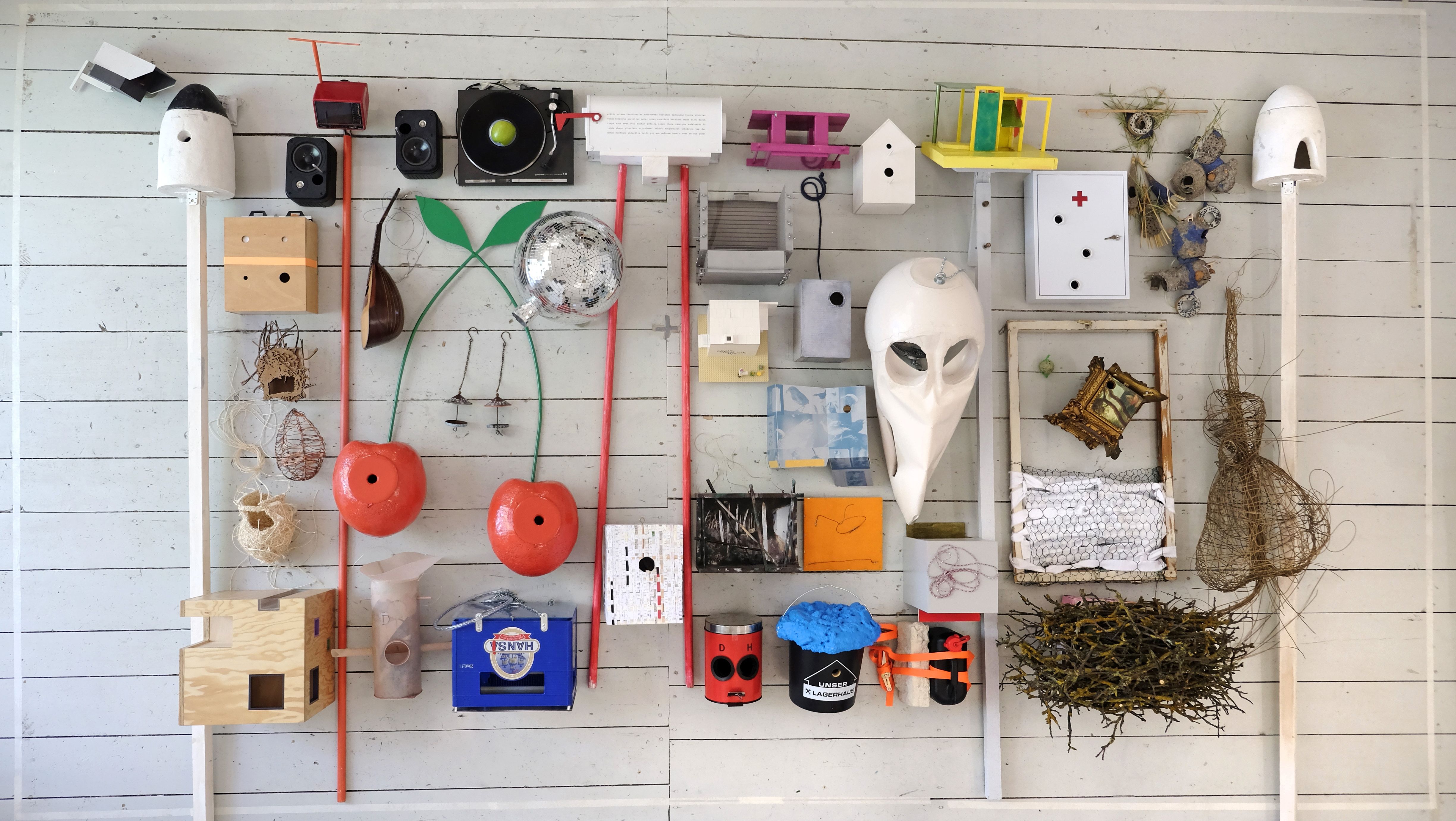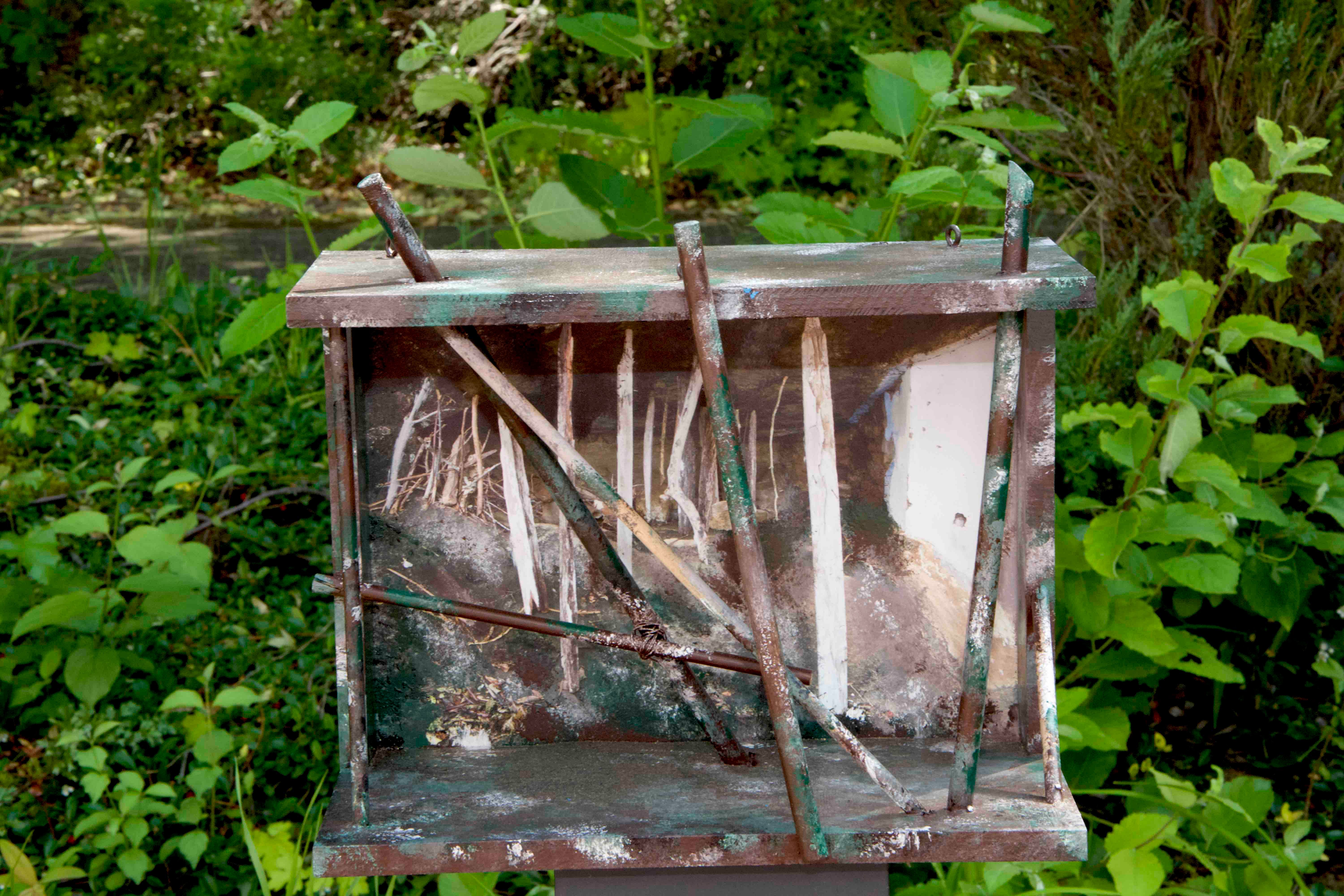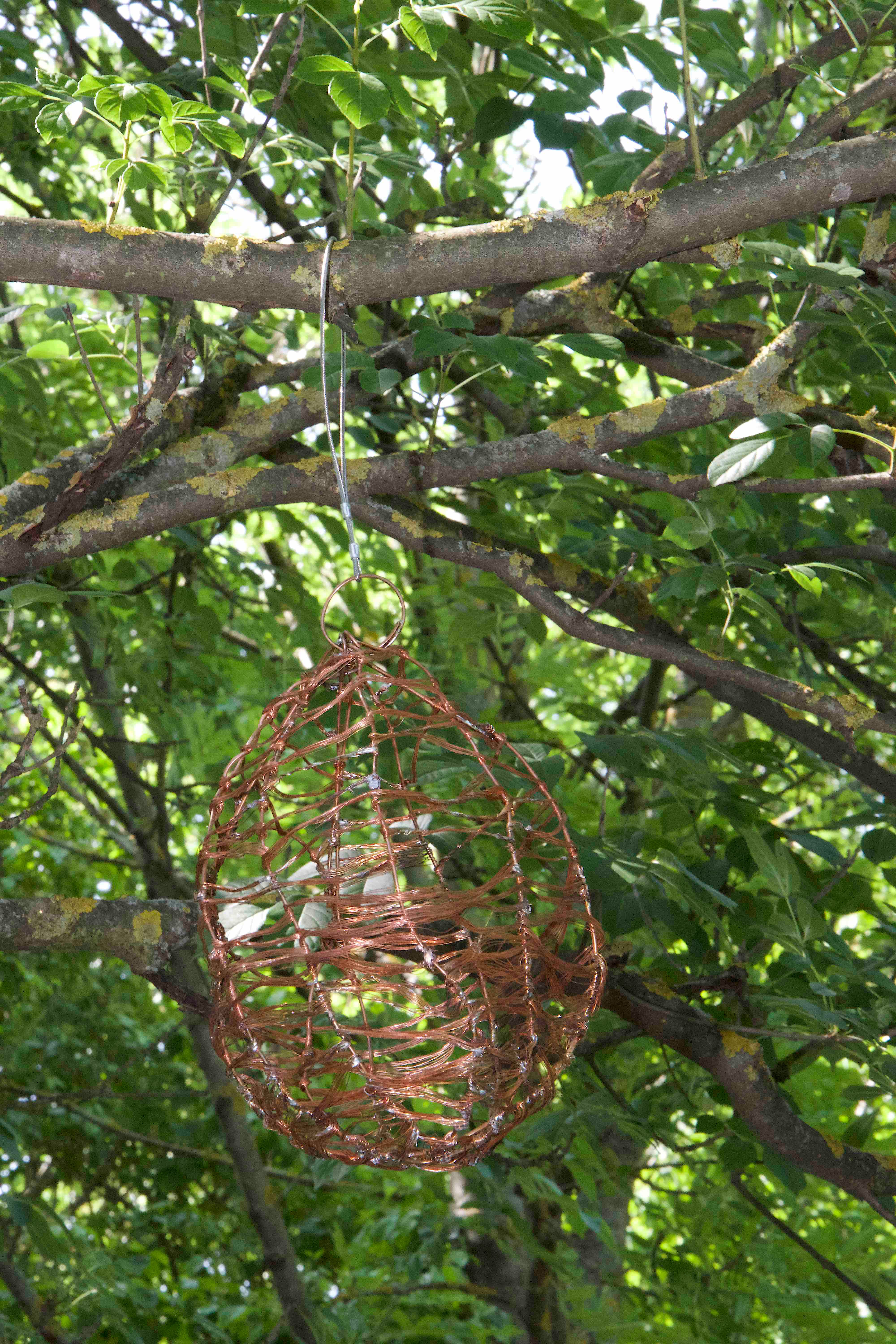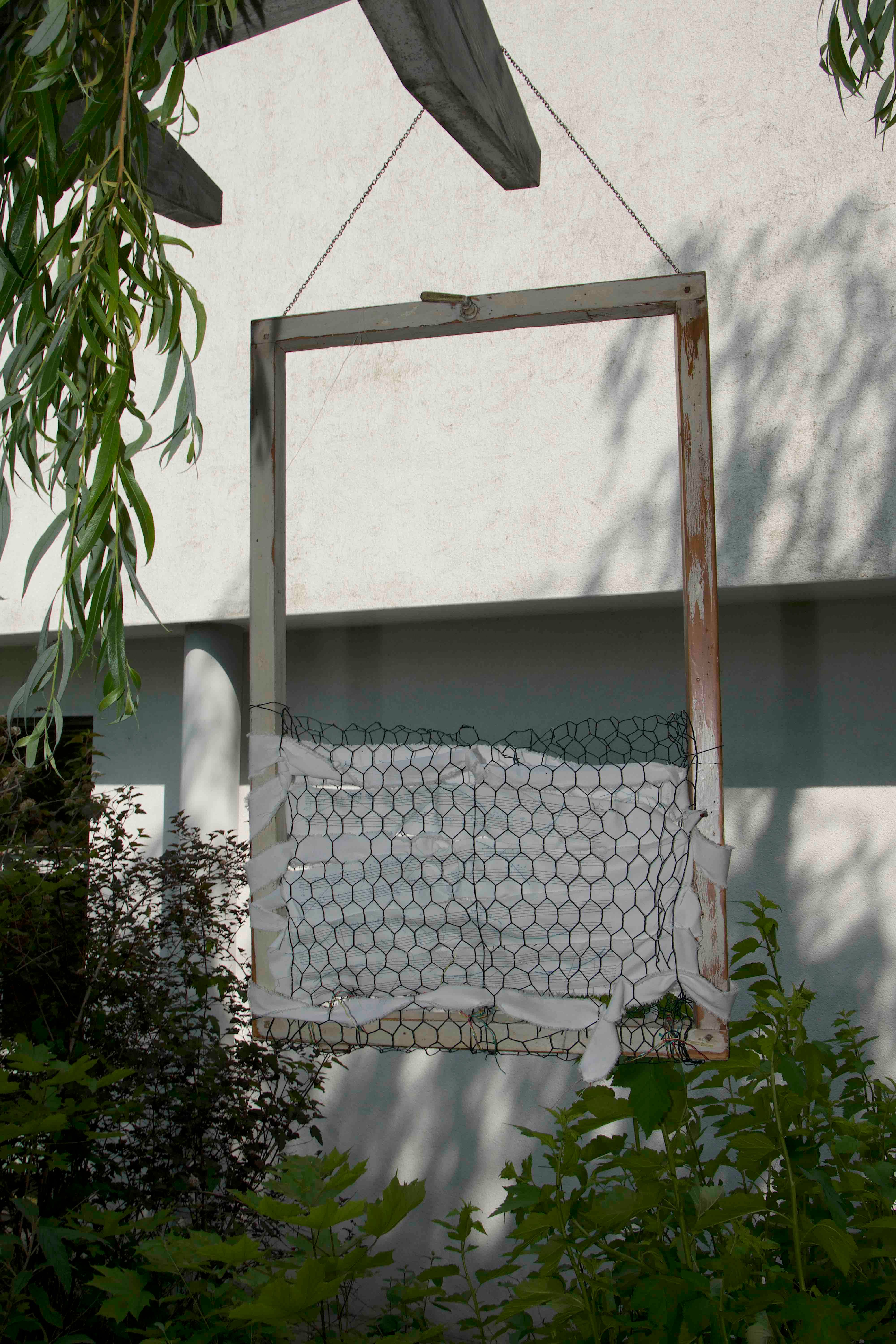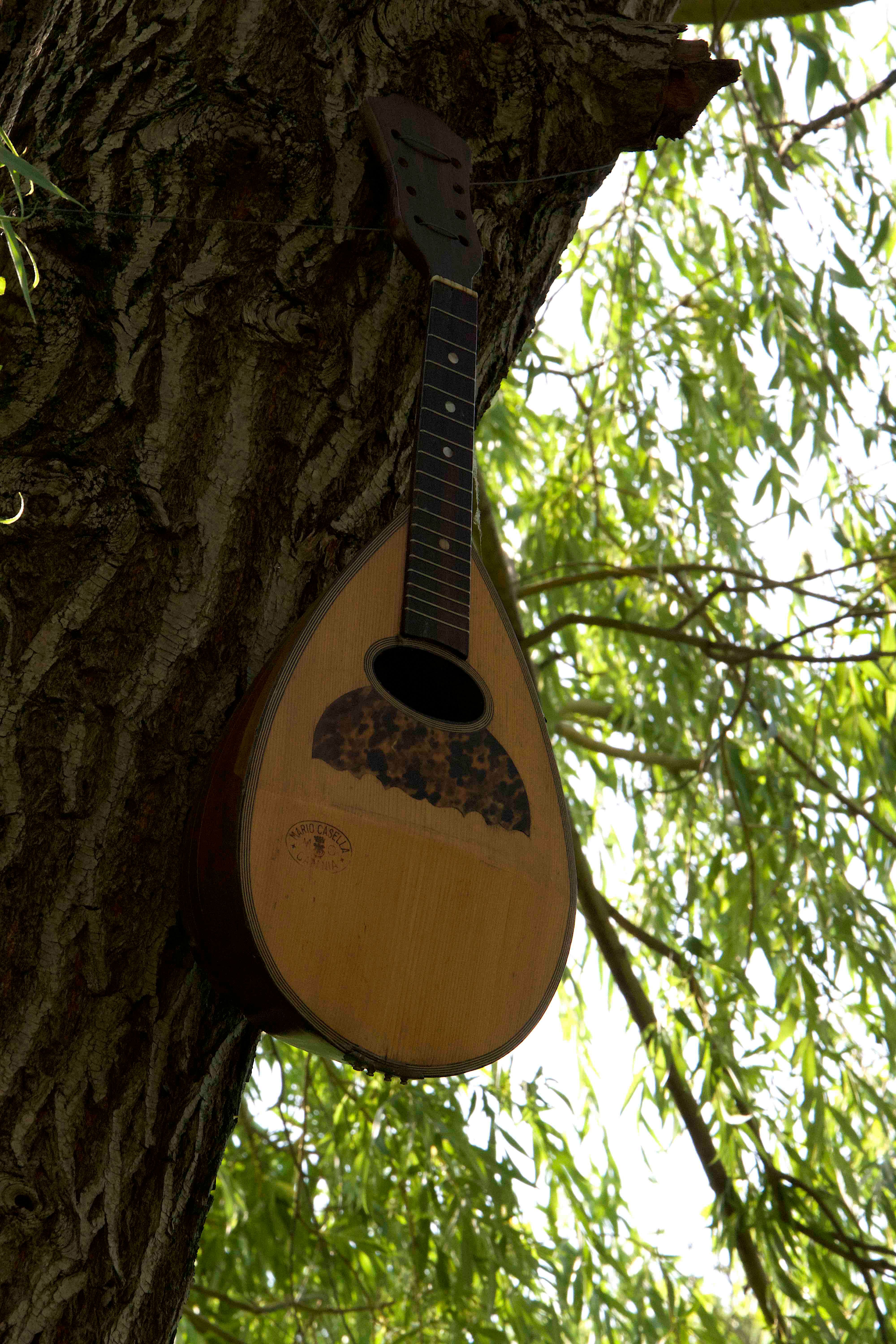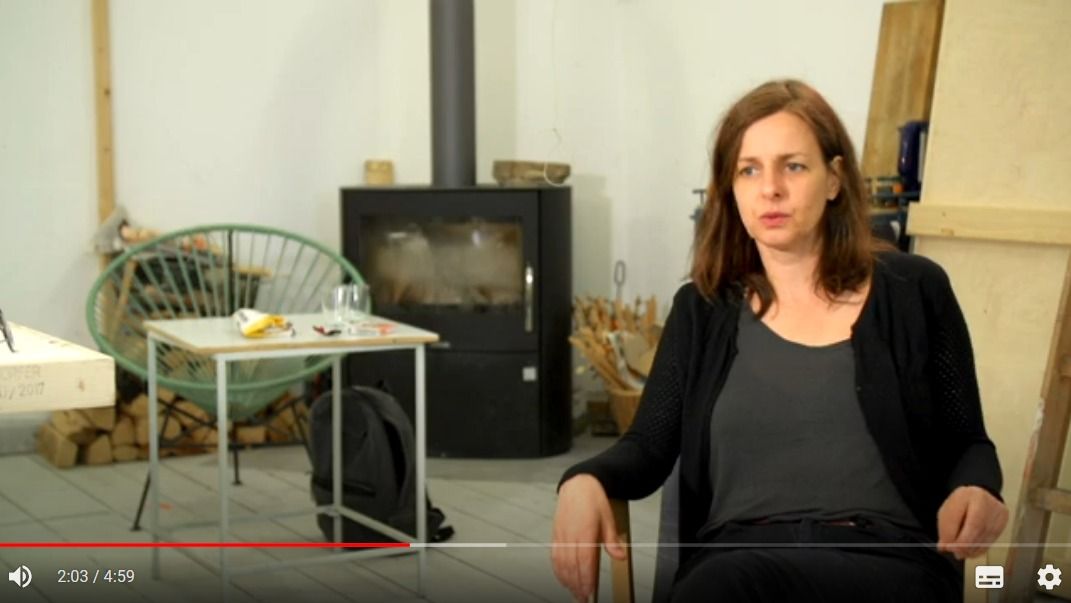Claudia Märzendorfer
:
For the Birds
Back
Information
Hollabrunn has recently become home to a unique birdhouse colony: Thirty-eight nesting boxes and feeders will now be adorning the park around the town hospital for an indefinite period of time. Loosely based on the Werkbundsiedlung, an experimental housing estate in Vienna, this project assembles innovative prototypes for a future-oriented style of community living for all.
The hospital owes this extraordinary collection titled Für die Vögel | For the Birds to an idea by the Vienna-based artist Claudia Märzendorfer, who invited more than 40 of her colleagues from different fields to realise the remarkable project. It also includes a sound installation at the side entrance that provides more or less important information about birdlife in twitters and whistles.
The occasion for this collective artistic manifesto is the 20th anniversary of the Department of Social Psychiatry at the hospital in Hollabrunn. The hospital wanted to celebrate this anniversary with an artwork specially developed for the occasion to create a visible sign for the public. The positive therapeutic effects of art are just as undisputed as those of interpersonal communication and the intact relationships between humans and animals and nature.
Märzendorfer therefore decided to create an “aeronautic sculpture garden.” This special sculpture garden used by birds is meant to offer people who pass by here every day – on their way to therapy sessions and treatment, to work, or to visit someone – a sense of pleasure and to spark inspiring conversations.
With its fundamental openness and generosity, this collective project also makes a clear case for diversity and unorthodoxy, and particularly for mutual respect. It is an invigorating and encouraging alternative model opposed to excessive individualism, social peer pressure, and (neoliberal) self-optimization, all of which sometimes have a negative impact on our health.
More than forty artists across all ages and countries and naturally representing a balance of genders have contributed to this project. The artists list reads like a who’s who of the Austrian and international art world – from AA for Azra Akšamija, award-winning artist and professor at the prestigious MIT in Cambridge (USA), to WW for Werner Würtinger, former president of the Vienna Secession who, in his long-standing teaching career at the sculpture class at the Academy of Fine Arts Vienna, has influenced several generations of artists.
The bird houses include romantic interpretations – for instance, a love nest woven out of anonymous love letters made by the musician Maja Osojnik, or the bright red Cherry Couple created by the artists Toni Schmale and Wally Salner. There are also wild, organic nest-like objects by Judith Fegerl, Simona Koch, and others, as well as bird boxes whose precise, clear lines give them a somewhat minimalistic appearance, like those by Udo Bohnenberger and Lotte Lyon. You can also find functional objects, like the ‘public bird toilet’ by the well-known cartoonist Rudi Klein, the air mail letter box by the author and musician Ruth Cerha, or the Birdaid station by Andreas Strauss. The thriving Viennese band Elektro Guzzi contributed the bird disco Nest 54 for exuberant, ecstatic bird dances, while the up and coming photo artist Sophie Thun installed a discreetly intimate photo studio. All sorts of birds can play and perform on a variety of stages, like the one designed by Miriam Bajtala, or the platform by British artist Anne Hardy. Architects developed modernist villas, Anita Witek created a spa for birds (Bird Spa), while others wrote poems and compositions (Ferdinand Schmatz & Annelie Gahl) or repurposed musical instruments, like Ed Schnabl. Both Hans Schabus and Swiss artist Regula Dettwiler repurposed everyday objects. While Schabus, a Biennale participant and head of the sculpture class at the University of Applied Arts in Vienna, turned a beer crate into a feeding platform, Dettwiler, who frequently addresses nature in her work, transformed a common warehouse bucket into a breeding house. Primetime news from Birdland are featured on Birdy TV, contributed by the acclaimed Austrian artist and director Edgar Honetschläger.
Since the end of the 1990s, Claudia Märzendorfer has attracted international attention with spectacular ice works, including a DJ set with hundreds of frozen records for Mozart’s anniversary year (Much Ado About Nothing, 2006), and life-size, hand-knitted spare truck parts sculptures (LKW-Ersatzteile, which include six tyres, an engine block, and an exhaust pipe, for instance). Recently, she has gained recognition for film works that address the destruction of musical instruments as a recurring phenomenon throughout music history: the ‘de-composition’ or rather, the deconstruction, of a grand piano in Smashed to Pieces (2018) and, most recently, the dissolution of (ic)e-guitars in Still of the Night (2019). In another project, Märzendorfer explores the urgent environmental issue of plastic waste in a red-hot, text-based artwork and visualises the subjects with meticulously made plastic sculptures that are both disturbing and aesthetically pleasing.
In an interview in which she discussed sustainability in 2014, Märzendorfer stated that the goal of her art is “to create a world next to, or parallel to, this world, because I usually find social mores and conventions to be restrictive. I’m often surprised by people’s conformism and consider this to be one of the fundamental problems in our society.” Her vision is therefore to create what is “essentially a deviation or a shift from the ‘normal situation.’”
Jeanette Pacher, (rspbrry club)
